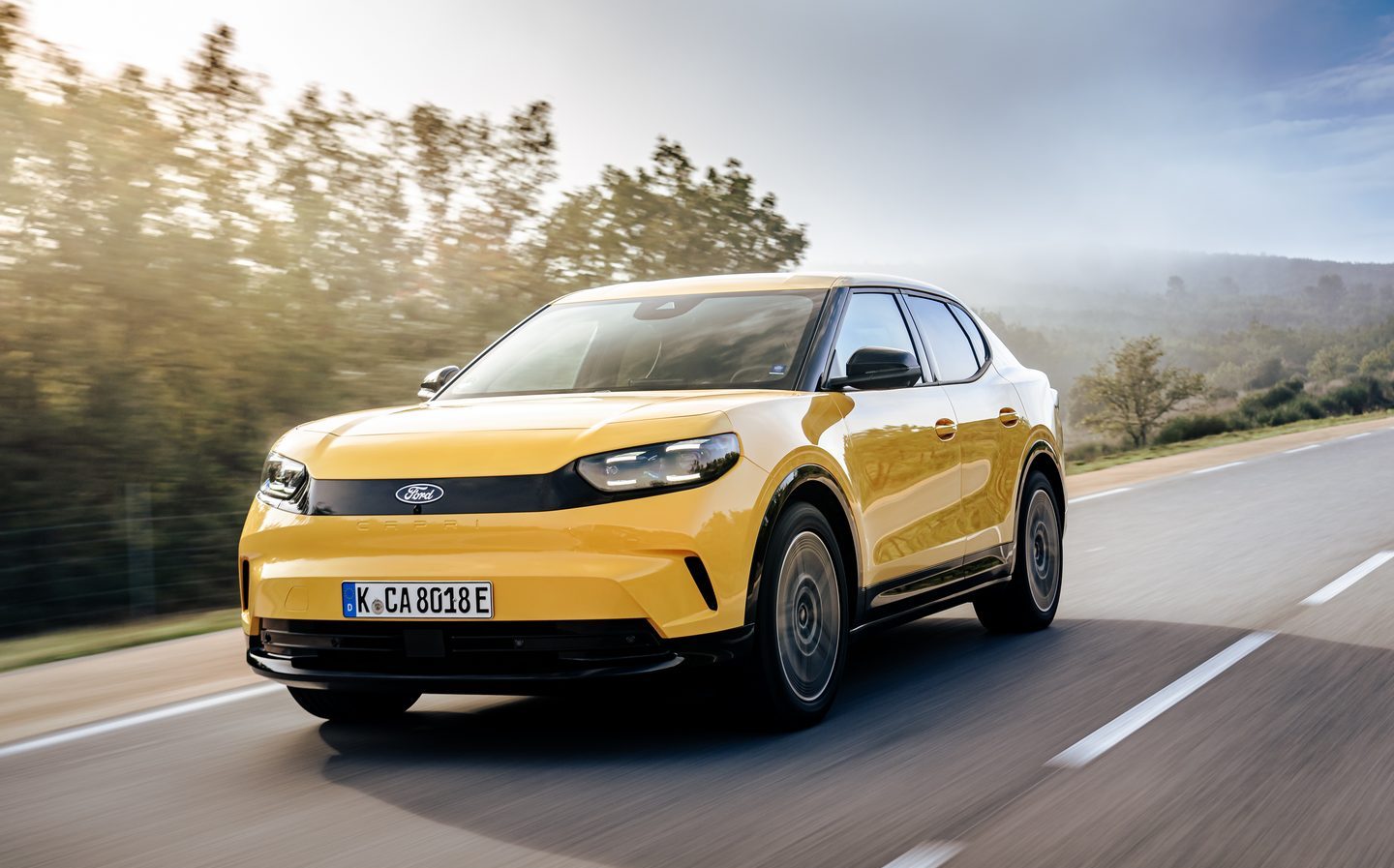Ford Capri 2025 review: A decent electric car weighed down by the expectation of its name
What would Bodie and Doyle think?
Car nuts tend to look backwards through rose-tinted spectacles, and fans of the original Ford Capri won’t thank me for pointing out the inconvenient truth that, well, it was a bit rubbish. We know it inspired thousands of blue-collar workers to aspire to owning a “sports car for the family”, and was central to many an iconic television moment — especially at the hands of Bodie and Doyle in The Professionals. But its legend was built on a few special editions, the rare high-performance models and the — admittedly stupendous — be-winged and be-muscled racers.
Nonetheless, there’s enough love in the fast-Ford community to cause a stir every time a rumour surfaced about a comeback for the hallowed Capri nameplate. Nearly 40 years after production of the Mk3 ceased, Ford has finally taken the plunge and, if social media commentary is anything to go by, not everyone is happy about it.
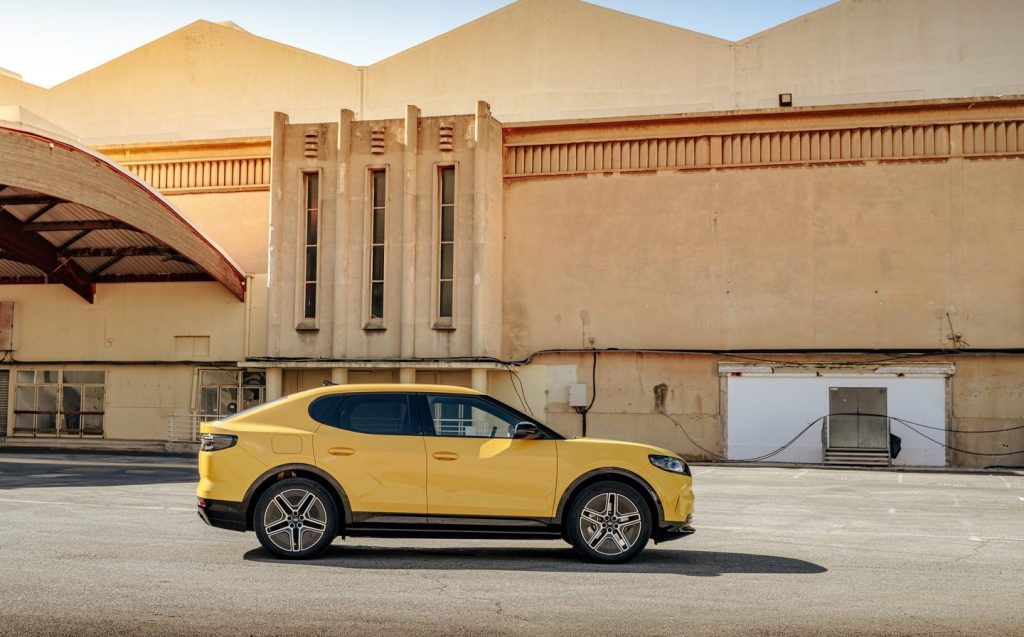
Despite the loud dissent from some quarters after the Capri’s unveiling at this year’s Goodwood Festival of Speed, Ford leant into the “legend is back” rhetoric for the first media drive event of the new car. Cue lots of period shots of the original, banging music and an admittedly very amusing Eric Cantona to introduce it all.
None of the razzamatazz could disguise the fact that the new car is an electric coupé-SUV based on the same underpinnings as the unassuming Ford Explorer, which in turn borrows heavily from Volkswagen’s ID models.
To say the Capri is a rebadged ID.5 would be unfair and untrue, though, as the Ford has a completely unique exterior and we’re told that this EV (electric vehicle) was designed from the start to be the new Capri.
When stylish sketches of certain aspects of the new car are put next to those of the old you can appreciate where the effort was made. It boils down to the curvature of the bonnet, a suggestion of muscle over the wheelarches and black strips front and rear incorporating modern LED lighting shaped to recall the four-lamp layouts of yesteryear.


Oh, and lest we forget, the rearmost side glass is curved in a nod to the original coupé body style. In truth, that works well in conjunction with the black windscreen pillars and door mirrors to give the Capri a sporty-ish profile, though I won’t be the first to liken the side view to that of the Polestar 2.
Long front doors, that side glass and the notably short rear doors conspire to visually truncate the Capri, so it’s a bit of a shock to discover it’s 174mm longer than the supposedly more practical Ford Explorer. It’s a full 26mm taller as well. The Capri is smaller than the Ford Mustang Mach-E, though inexplicably more expensive to buy, like for like.
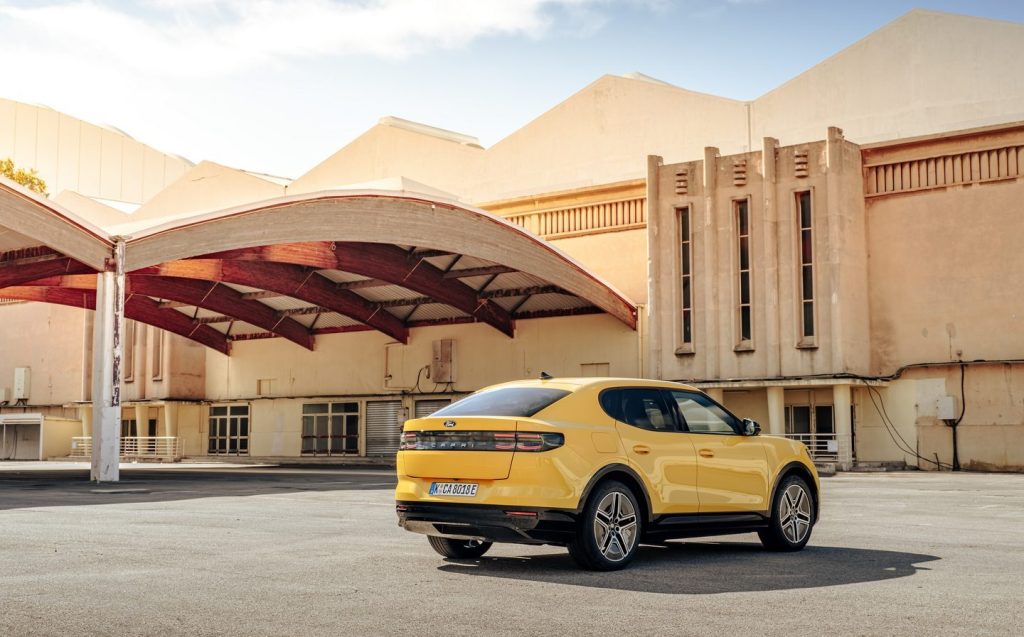
Prices start at £42,075 for the Capri in Select trim, rising to £48,075 for the Extended Range car and a full £56,175 for the four-wheel-drive version. The Mach-E starts at £43,330 in a specification more akin to the Extended Range Capri’s, which does make the mind boggle.
Nevertheless, even that basic Select model comes well-equipped, and a glance into the Capri’s cabin reveals that the retro vibe was all but ignored by the interior designers. The one token effort is a stylised six o’clock steering wheel spoke, though it’s a little incongruous on the modern leather-trimmed wheel with flattened top and bottom. It feels better to hold than it looks, in truth. It’s a shame the same can’t be said for the “haptic” touch-sensitive buttons.
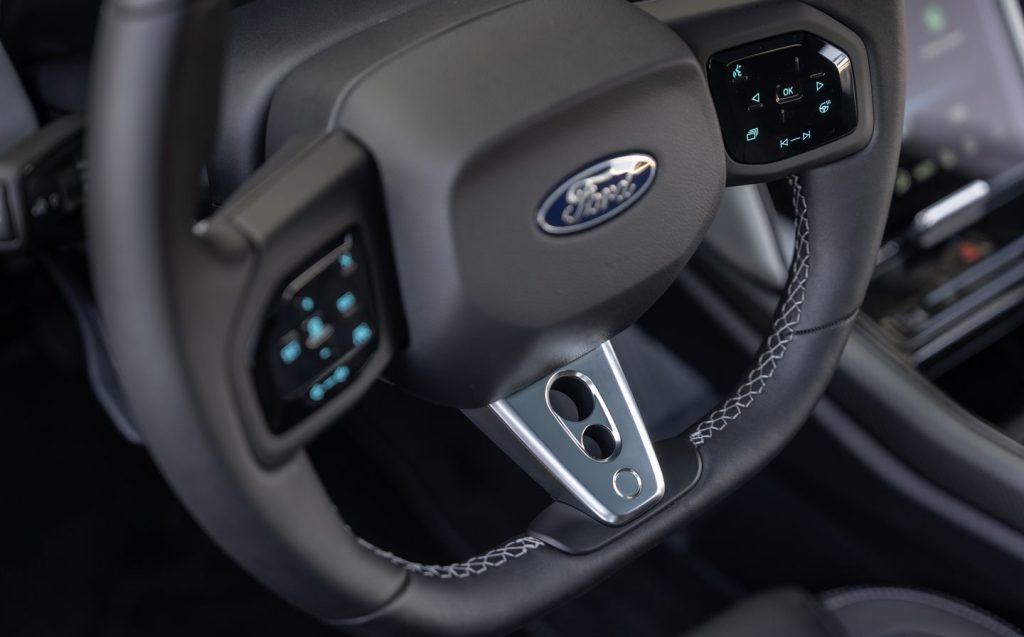
Though different in appearance, they’re suspiciously similar to what’s found in VW’s ID cars, and elsewhere Ford hasn’t bothered reskinning the controls, so the Capri features the same pad of controls for the lights to the side of the steering wheel, the same drive selector on the column, similar digital instrumentation and, infuriatingly, the same electric window switches on the door. Presumably as a cost-cutting exercise, there are just two switches, and then you need to press elsewhere to choose whether you want to operate the front or rear windows. It’s not intuitive to use at all.
Ford appears to have spent most of its interior budget on the space between the — excellent — front seats. The obvious star of this is a portrait-oriented 14.6in touchscreen, running Ford’s decent “Sync” infotainment software. The display feels luxuriously large without obscuring your view out of the windscreen, as some of the higher-set systems do. As ever we’d prefer physical switchgear for often-used functions such as the climate control, but at least the buttons for that are always visible at the base of the screen.
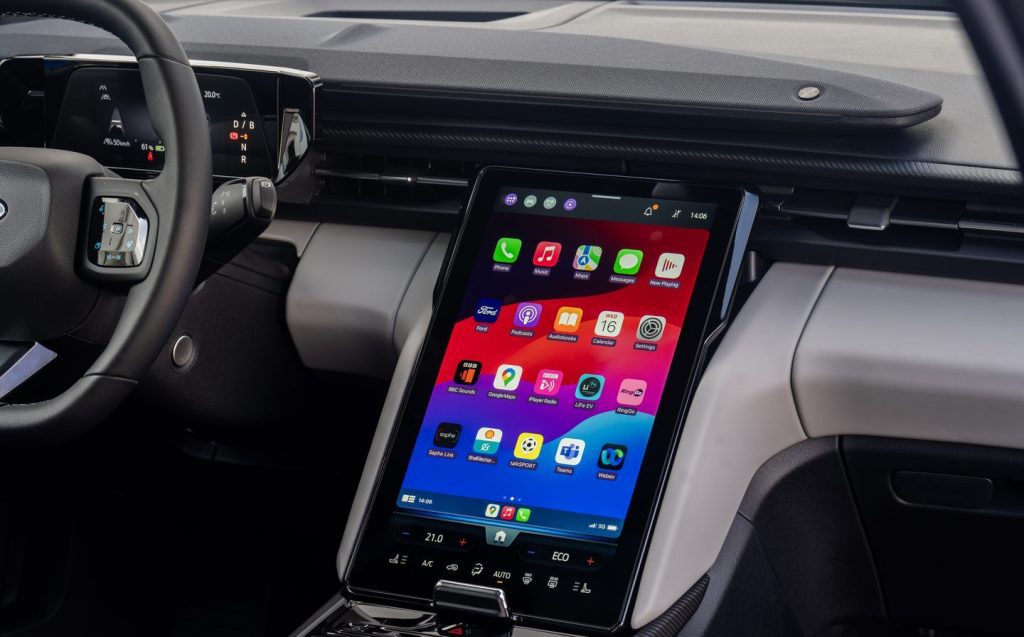
The menu system is easy to find your way around, the screen responds crisply and, though Ford has piled in the connectivity features, odds are most owners will resort to using wireless Apple CarPlay or Android Auto anyway.
It has another trick up its sleeve, though, in that the angle of the whole display can be varied to make it readable no matter from which direction the sun is shining. That works quite well, and in adjusting it for the first time you’ll discover a hidden storage area behind large enough to hold a phone and keys, for example. Ford calls this “My Private Locker”.
The firm has also coined the phrase “MegaConsole” to draw attention to how clever its designers have been with the cubby between the front seats. It doesn’t look particularly ingenious at first, though the deep, nearly vertical slots for phones at its front are useful, and there’s extra open storage underneath, plus the obligatory USB sockets and cupholders. Lift up the armrest, however, and you’ll see there’s quite a bit of space carved out.
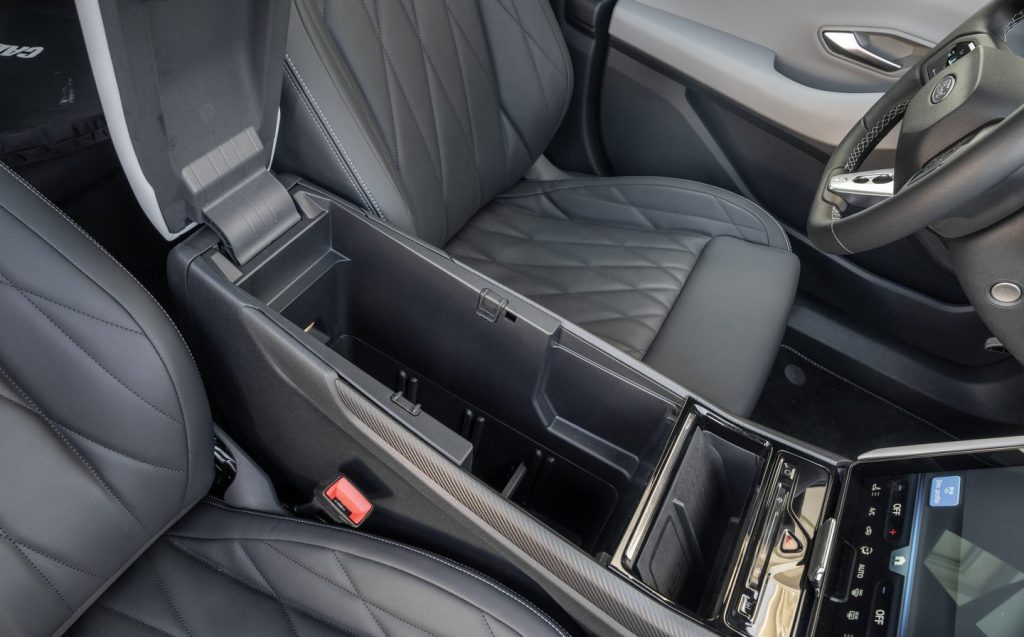
What’s more, the whole structure of the cupholder can be removed to expand this volume to a considerable 17 litres. Picture a one-litre bottle of water. Now imagine fitting 17 of them in the space between any car’s front seats. It’s a massive space, though more likely to be filled with handbags, iPads and a curry on the way home from the takeaway than an endless supply of spring water. It’s a USP, but probably won’t be reason enough to choose the Capri.
Fortunately, that’s not the end of the practicalities. Rear legroom, for example, is expansive, and the floor is flat all the way across. The centre position is narrower than the outer two, as ever, but has the best headroom and is entirely suitable for adult occupation.
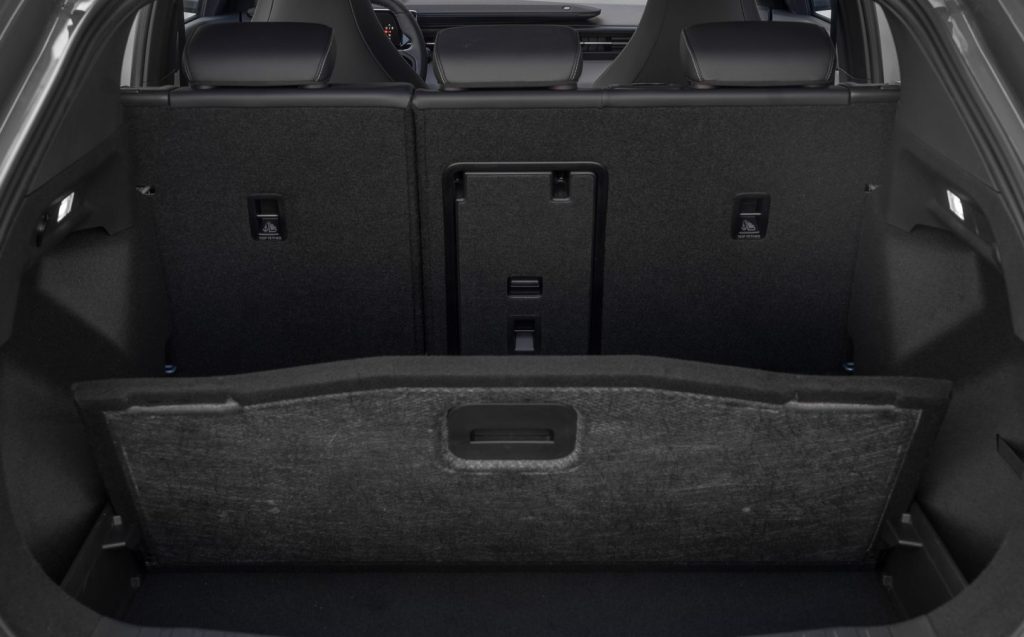
One of the biggest surprises comes when you open the Capri’s rear hatch, as its boot is huge, holding up to 572 litres when loaded to the top of the back seats, or 627 litres packed to the roof. That’s comparable to what you’d get in a Hyundai Tucson and, whisper it, much more than will fit in the equivalent Ford Explorer. The space can be divvied up thanks to the movable floor and built-in, removable baskets either side.
But hang on a minute… isn’t the Capri supposed to be the impractical and sporty one, compelling buyers to pay more for the privilege of the image at the cost of putting up with less usefulness? It seems Ford has got that all mixed up. Not that we’re complaining about it being a practical car, mind you.
Owners of most examples of the original Capri could only dream about the polished driving dynamics and effortless performance delivered by the new one, with one caveat: it’s not sporty in the least. We’ll concede that it’s a well-sorted chassis, one that — despite its strong link to Volkswagen’s cars — has a distinctly Ford-like feel to proceedings, making it enjoyable to drive in a normal way.
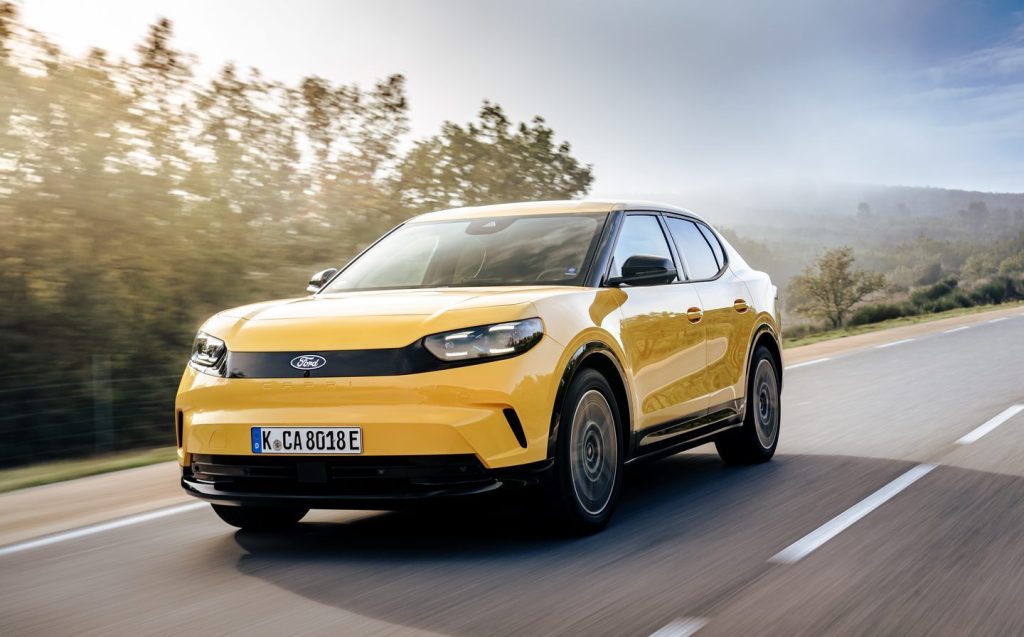
Without resorting to expensive adjustable dampers in the suspension, for example, it balances notably good body control with suppleness over most surfaces. There’s no unseemly thudding and banging from the suspension as it does so and actually, the whole car is remarkably quiet — even for an EV. Its smooth front end must do wonders for the aerodynamics, as wind roar over the Capri is minimal, while the electric motor can never be heard at work and even road noise is kept at bay.
All this civility adds up to a car that’s comfortable to drive or be driven in for extended periods of time. Well-judged steering and brakes add to the experience from the driver’s point of view, as the driving controls are consistently weighted and hence quite satisfying to use.
Don your net-back driving gloves to take the Capri by the scruff of its neck and it rewards with competence and stability, if not excitement or anything approaching sports-car-like engagement. There’s loads of grip — in the dry of our test in any case — and a neutral stance through tighter corners that gradually moves towards understeer (the tendency of the car to plough straight on) if you’re too ambitious with the corner entry speed.
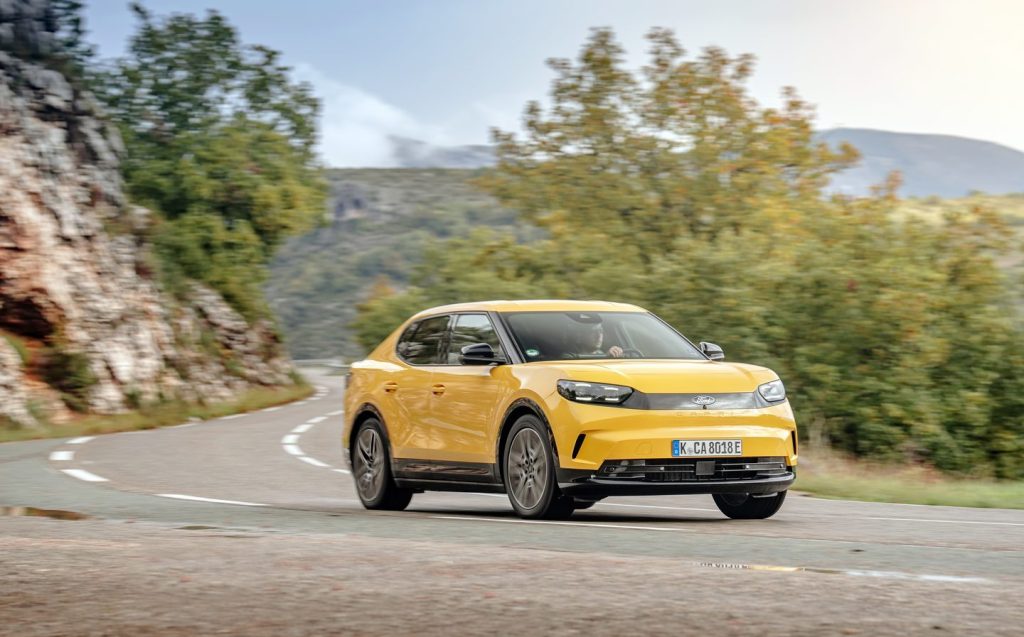
Get your braking done earlier instead, and floor the accelerator on the exit of a tighter bend, and you can feel the rear-mounted motor start to challenge the tyres. The stability control unobtrusively reins in the exuberance before most drivers would get nervous, though, and it’s no more edgy in the Sport driving mode.
The electric motor produces up to 281bhp and a considerable 402lb ft of torque (twisting force), but as the car weighs over two tonnes it’s not as rapid as you might expect. Saying that, a 0-62mph time of 6.4sec isn’t too shabby and while the accelerator pedal seems calibrated for smooth take offs, if you hold it down for longer the car soon picks up the pace.
The all-wheel-drive variant with two motors and up to 335bhp in truth doesn’t feel a lot faster than the rear-drive car, so we’d suggest it’s chosen more for its four-wheel traction than its extra performance.
Sticking with the “lesser” models is better for running costs as well. The most efficient version is the Capri Select Extended Range, officially managing 4.5 miles/kWh on the official WLTP test cycle and a range of up to 389 miles. We couldn’t match that on our test drive, averaging closer to 3.5 miles/kWh in a higher-spec car over a variety of road types.
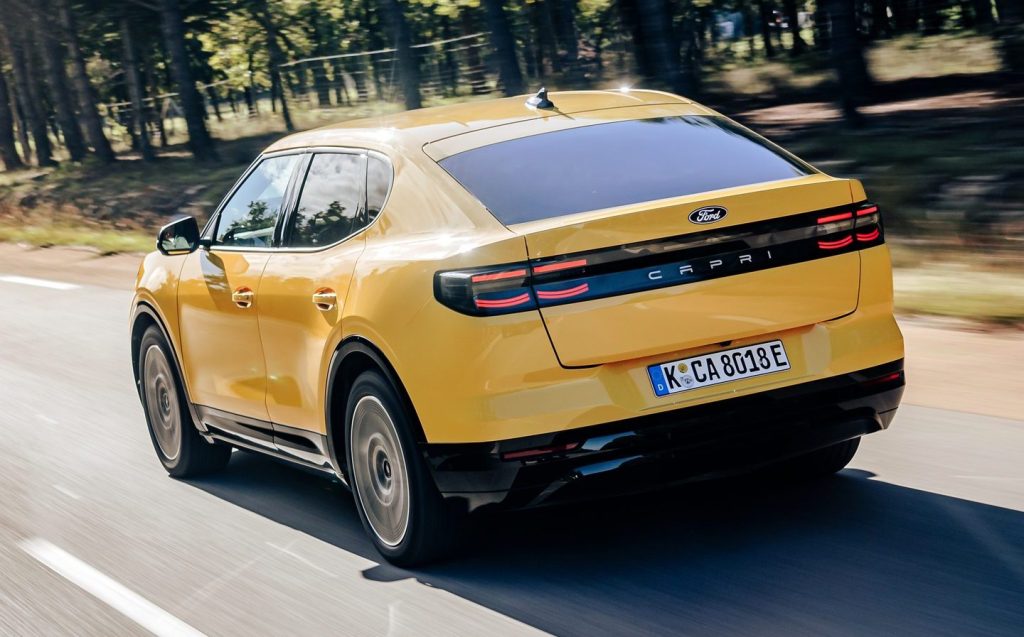
Still, most drivers should exceed 250 miles on a charge without too much drama, and at its peak DC-charging rate of 135kW, the Capri’s battery recharges from 10-80 per cent in a theoretical 28 minutes. It’s a shame, though, that Ford charges more for the heat pump as that should enhance the efficiency of the car during colder months.
This is beginning to sound like a review of any other electric SUV, isn’t it, rather than that of a “legend reborn”? The new car doesn’t really look like a Capri, it’s far more practical than any previous car to wear that badge, it drives better than most original examples, should never rust and will rarely break down, and it even helps its owner do their bit for reducing the emission of greenhouse gases.
Put simply, this is not a Capri in any sense that those who fondly remember the name would understand, or those who wish it were a coupé would want. For everyone else, it is a decent stab at the in-demand electric coupé-SUV that the market demands and, in truth, Ford needs.
Related articles
- If you found this review of the new Ford Capri interesting, you might also like to know what visitors to the Goodwood Festival of Speed thought of the car’s name
- Also check out the new Ford Explorer, on which the Capri is based
- Or read our review of another reinvention, the new Renault 5 E-Tech
Latest articles
- Lewis Hamilton wants to design a modern day Ferrari F40 with manual gearbox
- Dacia Bigster 2025 review: The ‘anti-premium’ family SUV that punches above its weight
- Your car’s worn tyres could be being burnt illegally in India, investigation reveals
- Open-top 214mph Aston Martin Vanquish Volante is world’s fastest blow-dry
- F1 2025 calendar and race reports: The new Formula One season as it happens
- Alfa Romeo Junior Ibrida 2025 review: Hybrid power adds an extra string to crossover’s bow
- Top 10 longest-range electric cars: all with over 400 miles per charge (officially)
- Renault 5 Turbo 3E ‘mini supercar’ confirmed with rear in-wheel motors producing 533bhp … and insane levels of torque
- British firm Longbow reveals ‘featherweight’ electric sports cars with 275-mile range


